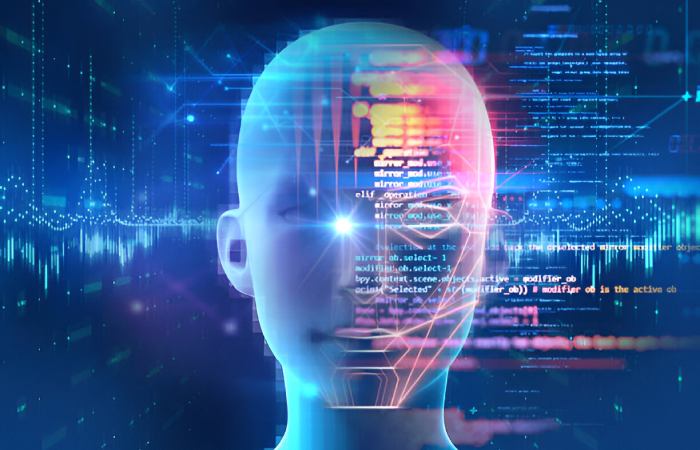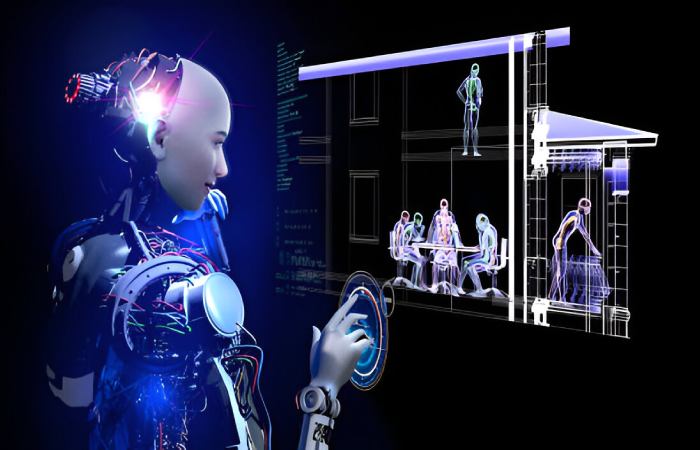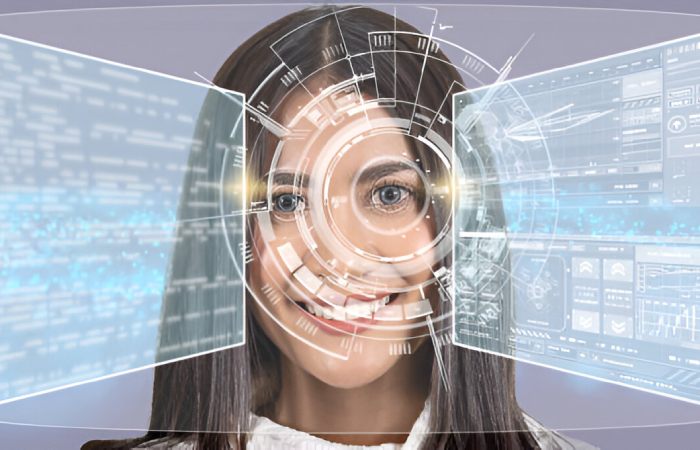Artificial intelligence (AI)-powered facial recognition transforms how security and surveillance are managed worldwide. According to Fortune Business Insights, the global AI facial recognition market was valued at US$7.73 billion in 2024 and is expected to reach US$8.83 billion by 2025. This figure is projected to grow to US$24.28 billion by 2032, at a compound annual growth rate (CAGR) of 15.5%. In real terms, London police reported arresting more than 500 suspects in 2024 alone using facial recognition technology, highlighting its growing role in crime prevention.
With these rapid advancements, this article analyses how AI-powered facial recognition is transforming modern surveillance systems. The article discusses its operation, applications, role in improving public and private security systems, ethical issues, and future prospects. We’ll also explore how technologies like AI-powered CCTV cameras are transforming the standards of proactive security.
How AI Powers Facial Recognition Systems
First, AI significantly improves the efficiency of facial recognition systems. Machine learning algorithms, profound learning, allow computers to process facial data accurately. These algorithms analyse specific facial features, such as the distance between the eyes or the jaw shape, to identify people.
As these systems are trained with larger datasets, their accuracy increases. In fact, the latest models have achieved an accuracy of over 99.97% under ideal conditions. This accuracy makes it possible to distinguish between thousands of people in a crowd and compare faces taken in low light or from unusual angles.
As a result, these AI models are being integrated into video surveillance networks to provide real-time facial matching, anomaly detection, and alert generation. This makes them highly effective for continuous monitoring in high-traffic or sensitive environments.
Real-World Applications of AI Facial Recognition

Thanks to technological advancements, facial recognition systems are widely used in various sectors. Law implementation agencies use them to identify suspects, verify identities, and analyse video recordings during investigations. These systems can automatically scan hours of video data and extract the necessary recordings, saving time and effort.
Additionally, airports around the world use facial recognition for immigration and boarding. By 2023, nearly 97% of the world’s airports had already implemented this technology to some extent. Retail stores, banks, and stadiums use it for access control, fraud prevention, and customer behaviour analysis.
Therefore, AI-powered facial recognition has become more than just a surveillance tool; it has become a strategic tool for improving security, efficiency, and the user experience.
Advantages of AI-Powered Surveillance
At the same time, AI facial recognition improves video surveillance by adding new layers of intelligence to the monitoring process. Unlike traditional CCTV systems, which record video, AI systems can interpret, analyse, and respond to visual data in real time.
One of the main advantages is speed. AI can simultaneously process multiple video streams and identify threats faster than human operators. Furthermore, facial recognition combined with behavioural analysis helps detect suspicious activity, such as loitering or unauthorised access, before it escalates into something more serious.
Furthermore, AI systems reduce false alarms. By distinguishing between people, animals, and external factors such as swaying trees or shadows, the technology eliminates unnecessary alarms and helps focus security resources more effectively.
The Rise of the AI Security Camera

These capabilities have made AI-powered CCTV cameras the cornerstone of intelligent video surveillance. These cameras don’t just record data; they detect and analyse motion, identify people, and automatically trigger alerts.
For example, in commercial spaces such as warehouses, schools, and healthcare facilities, AI-powered CCTV cameras can help detect unauthorised access, identify lost items, and even count people entering and leaving the premises. Through real-time analysis, they can detect threats before they occur, ensuring proactive rather than reactive security.
According to industry studies, AI-powered cameras can decrease false terrors by up to 90% and speed up incident investigations by more than 50%. This makes them a powerful tool for businesses and institutions that require efficiency and reliability in their security systems.
Features That Enhance Surveillance Efficiency
As artificial intelligence advances, CCTV cameras incorporate advanced features, significantly improving their effectiveness. Among the most important are:
- Facial Recognition: Cameras compare facial features with stored profiles, allowing access control and identification of persons of interest.
- License Plate Recognition (LPR): These systems automatically record vehicle entry and exit, which is valid for gated communities, parking garages, and logistics centres.
- Behavioural Analysis: AI-powered cameras track behaviour, such as loitering or running, to identify potential threats early.
- Real-Time Alerts: These systems can automatically notify security personnel or trigger an alarm when anomalies are detected.
- AI Search: Users can search CCTV footage using natural language queries, such as “man in red shirt at main entrance,” significantly reducing video review time.
These features create a more intelligent, efficient security infrastructure that minimises manual work and improves threat detection efficiency.
Ethical and Legal Challenges
Artificial intelligence (AI)-based facial recognition technology faces significant ethical and legal challenges despite its benefits. Many privacy advocates argue that constant facial tracking could lead to intrusive surveillance and infringement of civil liberties.
Several jurisdictions have passed laws to limit or regulate the use of facial recognition to address this issue. By 2024, 15 US states had introduced restrictions on the use of this technology by law enforcement. The European Union has also proposed rules governing the use of AI that prioritise transparency, accountability, and the application of strict conditions for biometric surveillance.
Furthermore, concerns about data bias persist. Facial recognition systems trained on homogeneous datasets can perform poorly with different demographic groups, potentially leading to false positives or negatives. These issues require stricter standards and higher-quality training data to ensure objectivity and accuracy.
Implementation in Public and Private Sectors
In terms of implementation, both the public and private sectors are investing heavily in AI-powered video surveillance systems. To monitor security, cities are installing AI-powered cameras at traffic lights, public transportation, and government buildings. Meanwhile, private companies use them to protect their facilities, enforce regulations, and manage risk.
In educational institutions, AI systems help monitor campus security, automate attendance, and identify unauthorised visitors. Healthcare facilities use them to restrict access to high-risk areas and track patient movements to ensure safety.
Their widespread adoption across all sectors demonstrates the flexibility and scalability of AI-powered video surveillance solutions, especially when utilising facial recognition capabilities.
Future Trends in AI Surveillance

Looking ahead, integrating facial recognition and AI into video surveillance systems is expected to accelerate. Advances in edge computing will allow cameras to procedure data locally, reducing latency and improving performance. Furthermore, AI models are becoming more efficient, requiring less energy and hardware resources to operate effectively.
There is also increasing attention to explainability and transparency in the decision-making of AI systems. This is especially important for regulatory compliance and public trust, especially when video surveillance concerns law enforcement or government agencies.
Furthermore, the market is migrating to cloud-based video management platforms, allowing centralised monitoring of multiple locations and continuously updating AI algorithms. This trend will continue, making AI-powered video surveillance more accessible and manageable.
Conclusion
In conclusion, AI facial recognition transforms video surveillance from passive to intelligent and adaptive security systems. With the ability to process, analyse, and respond in real time, this technology significantly improves security, efficiency, and control.
Integrating AI-powered video surveillance cameras into public and private infrastructure further expands video surveillance capabilities. As this technology becomes more common, it is imperative to prioritise ethical standards, transparency, and fairness to protect individual rights.
AI facial recognition is not just a technological advancement, but a shift in how security is conceptualised and implemented in the modern world. The continued development of this technology depends on responsible implementation, regulatory compliance, and ongoing innovation.
Key Takeaways
- AI facial recognition uses machine learning to identify people with high accuracy.
- This technology is used in airports, law enforcement, retail, healthcare, and education.
- AI video surveillance provides proactive security with real-time alerts and behavioural recognition.
- An AI security camera is a powerful tool that reduces false positives and increases situational awareness.
- Ethical and privacy concerns require clear guidelines and transparent system development.
- The AI facial recognition market is growing rapidly, and significant advancements are expected in the coming years.
FAQs
What is AI facial recognition?
AI-based facial recognition technology uses machine learning procedures to detect and identify humanoid faces in images or video streams. It compares facial features with stored data to verify or recognise a person.
Where is AI facial recognition commonly used?
It is widely used in law enforcement, airport security, retail, education, healthcare, and private businesses for access control, crowd monitoring, and fraud detection.
How accurate is facial recognition technology?
Under optimal conditions, AI facial recognition accuracy can exceed 99.9%. However, this accuracy can vary depending on lighting, image quality, and the diversity of data sets.
What is an AI security camera?
An AI CCTV camera combines traditional video surveillance with AI features such as facial recognition, behavioural analysis, and real-time alerts. These cameras can process images autonomously, reducing response times and false alarms.
Are there regulations around facial recognition technology?
Yes. As of 2024, at least 15 US states have passed laws regulating the use of digital technologies. The EU and other international organisations are also developing mechanisms to ensure the ethical and confidential use.

